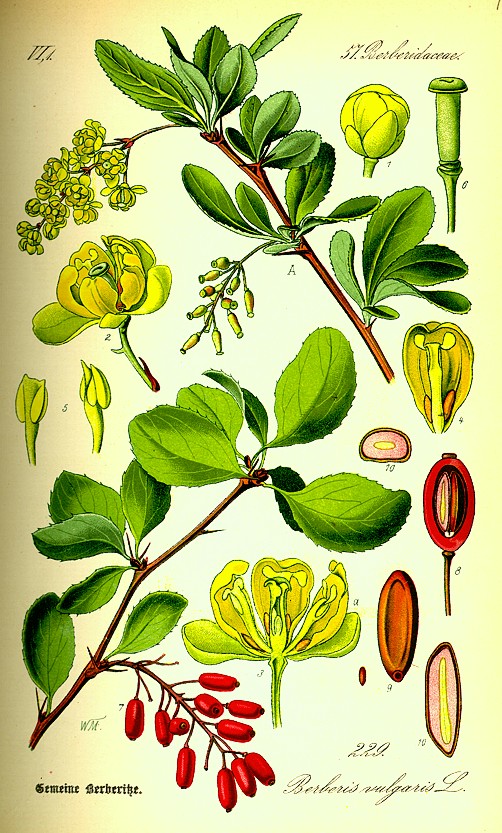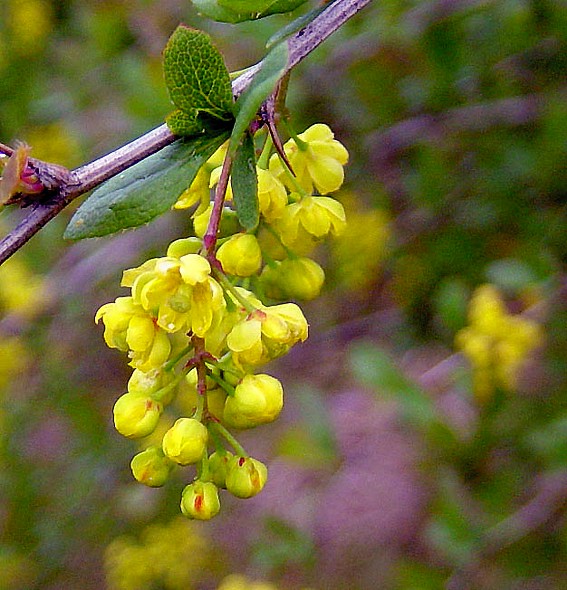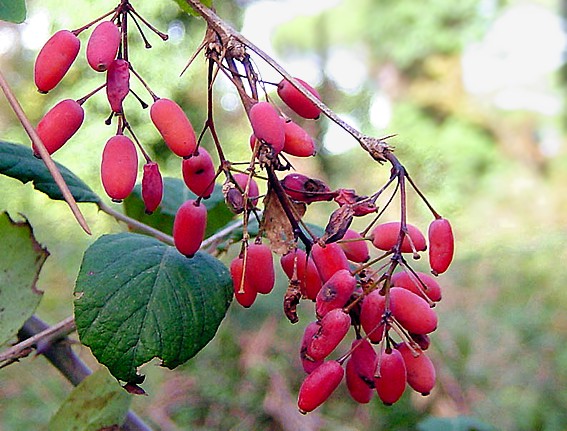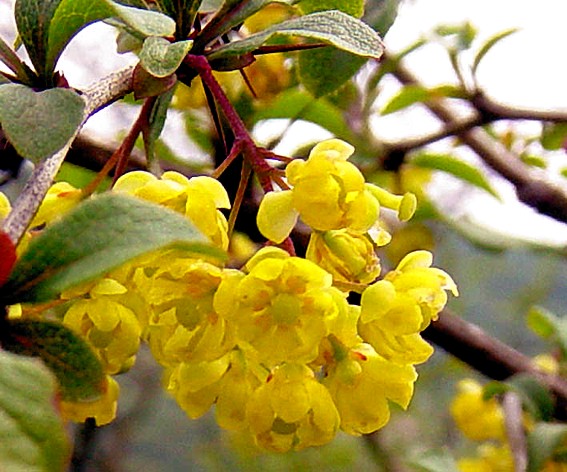Lessico
Crespino
Berberis vulgaris

Dal latino *acrispinum, dalle spine acute. Arbusto spinoso - Berberis vulgaris - della famiglia Berberidacee, detto pure berbero, originario del continente eurasiatico, frequente ai margini delle pinete o dei boschi asciutti, dal piano alla zona alpina. Alto fino a 3 m, ha foglie oblunghe, coriacee, dentate e riunite in fascetti, e fiori piccoli, gialli, in racemi penduli, con stami irritabili che si accostano al pistillo se toccati.
I frutti sono piccole bacche oblunghe, rosse, con polpa di sapore acidulo ricca di vitamina C, talvolta usate per confezionare marmellate. La corteccia e la radice contengono sostanze con proprietà febbrifughe; il legno può essere impiegato per piccoli lavori al tornio.
La presenza del crespino in prossimità di colture di cereali deve essere evitata, perché questa pianta, essendo ospite intermedio della Puccinia graminis, favorisce la diffusione di una grave malattia delle Graminacee (ruggine). La pianta viene spesso usata nei giardini per comporre siepi; alcune varietà hanno particolare pregio decorativo.



Berberis vulgaris (European Barberry) is a shrub in the family Berberidaceae, native to central and southern Europe, northwest Africa and western Asia; it is also naturalised in northern Europe, including the British Isles and Scandinavia, and North America. It is a deciduous shrub growing up to 4 m high. The leaves are small oval, 2-5 cm long and 1-2 cm broad, with a serrated margin; they are borne in clusters of 2-5 together, subtended by a three-branched spine 3-8 mm long. The flowers are yellow, 4-6 mm across, produced on 3-6 cm long panicles in late spring. The fruit is an oblong red berry 7-10 mm long and 3-5 mm broad, ripening in late summer or autumn; they are edible but very sour, and rich in Vitamin C.
The plant is both poisonous and medicinal. The plant, except for its fruits and seeds, is mildly poisonous. Its most potent agent is berberine, which is also known to have a number of therapeutical effects. In Europe, the berries are traditionally used for making jam. In southwestern Asia, especially Iran, where they are called zereshk, the berries are used for cooking, to spice rice for example, as well as for making jam.
It is an intermediate host for Puccinia graminis (black rust), a rust disease of wheat. Wheat farmers had accused barberries of spreading rust as early as 1660, but were derided as superstitious by the jam makers. The matter was not settled scientifically until 1865. Because of the impact of this disease on wheat crops, cultivation of European Barberry is prohibited in many areas.
L'épine-vinette (Berberis vulgaris) est un arbuste épineux à feuillage semi-persistant de la famille des Berbéridacées. En France, l'épine-vinette est systématiquement supprimée car c'est un hôte intermédiaire dans le cycle des rouilles (champignons pathogènes des céréales). Elle a donc été éradiquée en Europe occidentale. Avant leur maturité leurs baies sont faiblement toxiques car contenant de la berbérine. Mûres en septembre, elles sont comestibles crues ou cuites.
Les baies vertes sont employées avec les sauces piquantes et les viandes rôties qu'elles relèvent grâce à leur goût acidulé. En infusion: une pincée d'épine-vinette, une pincée d'anis vert et une pincée d'anis étoilé donne un tisane digestive d'un goût et d'une couleur attrayante. L'écorce des tiges et des racines possède quant à elle des propriétés anti-inflammatoires et anti-microbiennes. La consommation de cette plante est déconseillée pendant la grossesse.